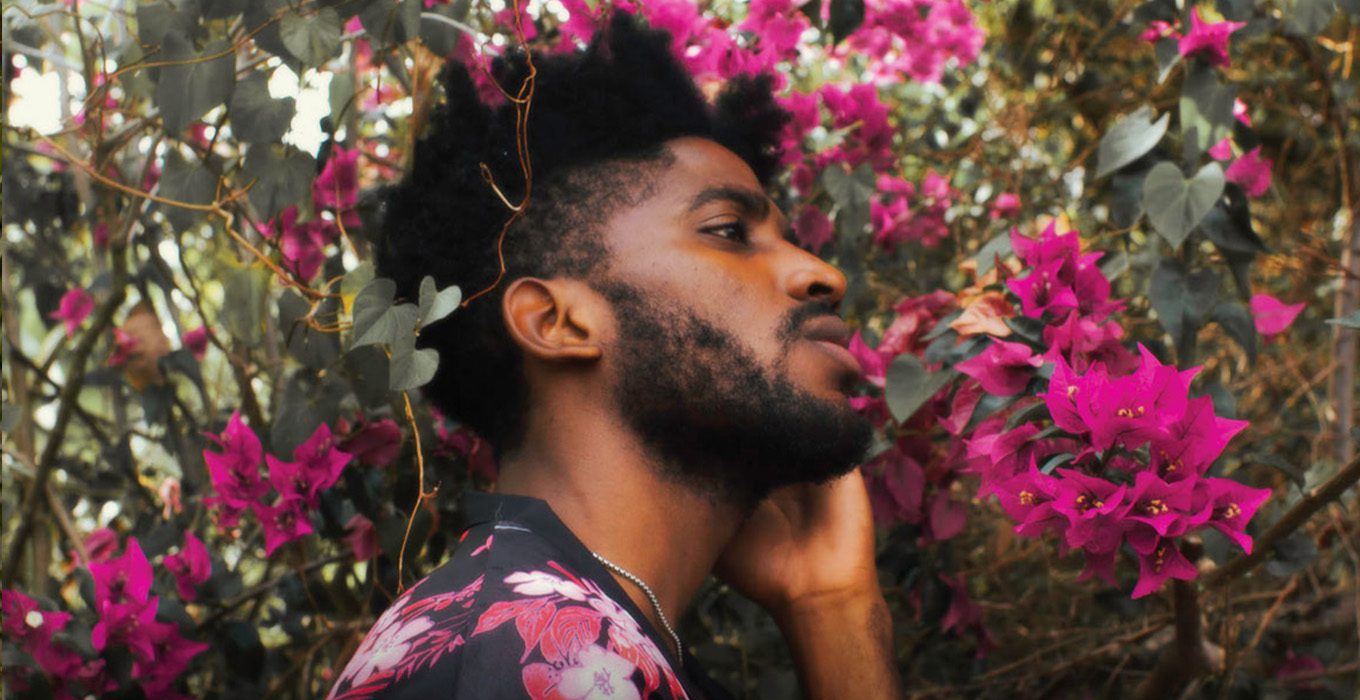
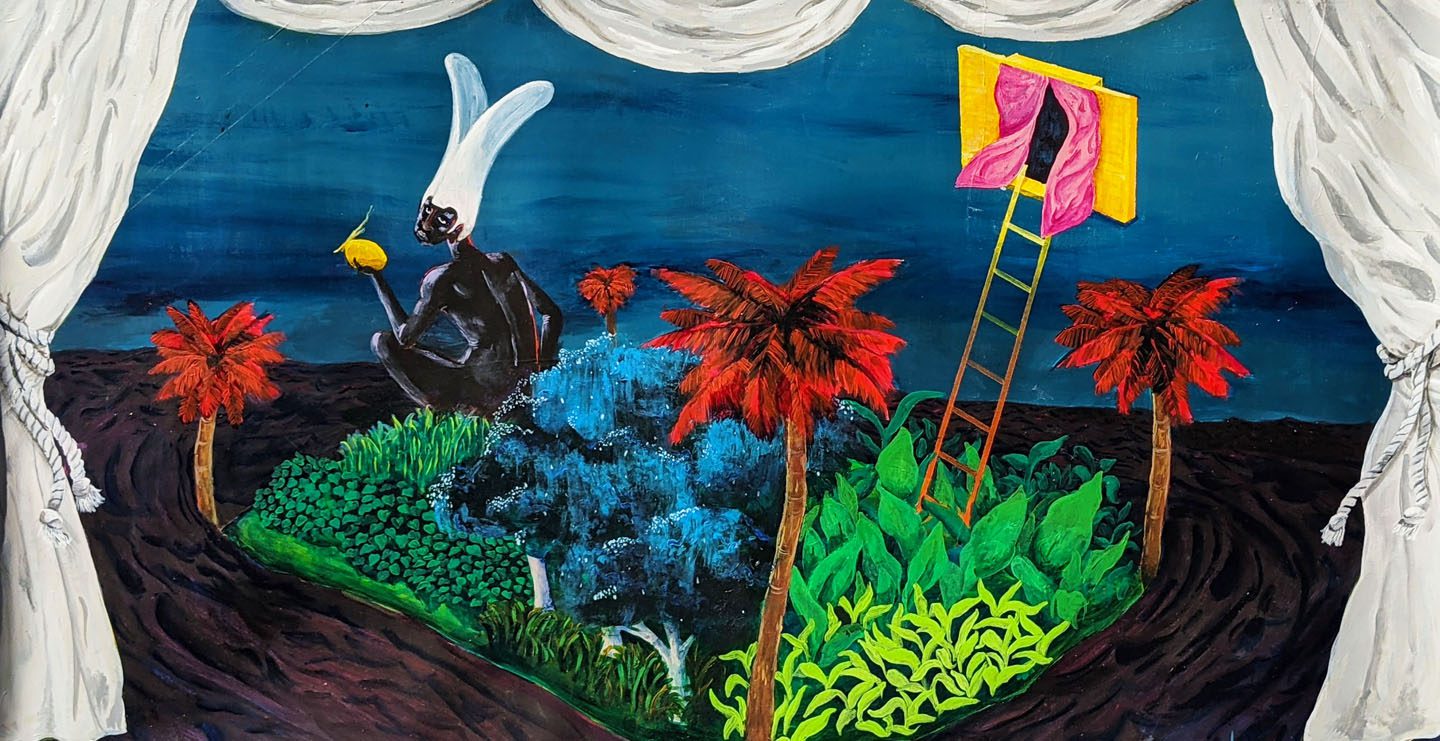
AUGUST 13th, 2023
Kriston Banfield, a Visual Artist from Trinidad & Tobago, currently residing in New York, Kriston took sometime to talk about what it means to be an exceptional human being and his progression as an emerging artist.
Does describing yourself as an Artist encapsulate who you are?
Kriston: Mmm, that’s very existential…
Yeah, we’re starting things off light & easy.
Kriston: Right, light. In my mind that’s how I define myself. It’s one of my grounding, defining traits? I’m really just aspiring to be an exceptional human being in whichever way, shape or form that comes.
How would you define that if you had to – being an exceptional human being?
Kriston: Well, not being a dick for starters but in regards to being an artist, lately I’ve just been trying to understand myself more and as I mature that process is always changing. I’m still trying to get somewhere, I don’t feel like I have a definitive label just yet but for now I will take on Artist and hold on to that.
Having moved to a new place, meeting new people and engaging, after the typical intro’s of “where are you from?” and the “what do you do?”. That’s the first thing I’ve said, regardless of who I’m talking to.
When did you start getting into art and realising this it’s something you wanted to pursue? Was there a light bulb moment or was it gradual?
Kriston: I feel like I always knew. I’ve said this before but I’ve always been drawing and sketching, even as a child. My mind was and still is, always out there imagining something and eventually putting it to paper.
When I started secondary school I was like, I have to do art but initially when we were picking subjects – I’m giving yuh di whole tra-la-la – my art teacher at the time didn’t recommend me. So I did chemistry instead, but I wasn’t good. Eventually, I got moved into the art class but before they even made it official I was already in attendance regularly.
Fast forward to 6th form when I was probably around 17, I was like yeah this is definitely where I fit. It always felt right, but then it really clicked and it was time to own it.
After that I just continued working and you know how life goes, with a bit of practice and determination it may eventually happen. Still, I’m always learning and processing and I think you’d relate to that as a designer yourself, from the artistic point of view.
Yeah, it’s always about taking new risks and finding new inspiration. Did you have many artistic influences back then, in high school and has that list expanded as you’ve matured?
Kriston: Back then definitely the masters were the influences like Rembrandt, Wifredo Lam, Picasso. My work at that time and probably still is, was very reminiscent of cubism. I was stylising my characters and making them a bit blocky, figuring out the structure. I was really into Hieronymus Bosch as well and consuming a lot of his work but I wasn’t willing to take on the challenge to paint like him at the time.
As I matured I started utilising various means of socials like Instagram and Tumblr. Oh, Tumblr was a big big big influence!
Tumblr! I loved Tumblr back in the day. I actually still use it every now and again, it definitely was a big source of inspo for my creativity as well.
Kriston: I haven’t been back on since but I’m thinking to make a full resurgence and go back with a proper art page or something. Through Tumblr I started seeing other artists and their works. Around that time I also got major inspiration from people like Wendell Mc Shine because he was the only person I noticed that had similar works to mine, stylistically.
As for now, my influences are a bit more global. I’ve been looking at Kerry James Marshall work, he counts as a master in his own right. There’s also been a lot of American painters on my radar lately, like Ludovic Nkoth, he has been a newly added inspiration for me.
There’s also a lot of younger artists I’ve been paying attention to who’re on the rise and I’m interested in understanding their emergence. Like what are they doing, whether it’s right or wrong, their route may not be exactly similar to mine but it does help me figure out how to engage this new art circle that I’m a part of now. The New York art scene is fucking massive, it’s a lot to sift through. People think it’s simply just about putting yourself out there or go do a show at that gallery or collaborate with this person and all that to start climbing, I don’t see that for me. I’m trying to a bit more discerning and learn from my peers.
You’re at a point where you’re trying to establish the right network?
Kriston: Yeah, trying to make smart moves and establishing the right networks has introduced a lot of my new influences and it’s not necessarily just their work but more-so how they go about getting their works shown. I could break it down simply as I see this guy climb to the top of this hill, I’d like to figure out how he did it – if they’re willing to share their story with me.
You mentioned earlier that you’re in New York now, how do you maintain your sense of self while away from the local elements that are usually expressed in a number of your works like ‘the subliminal folkloric evocations’.
Kriston: Hmm, so I was having a convo recently with a friend of mine about how I am very much away from my source. Eight out of ten times back home, I’d walk through the door backwards if it’s late. I do, I do…
So you’re pretty superstitious then?
Kriston: Oh yeah, well somewhat. There are certain things, but here I’m like boy ain’t no spirits in this place and no matter the time I’ll walk through the door normal. It’s definitely not the same, it’s been a challenge being away from the source.
As a result the work I’m doing now is much more introspective, it’s solely and honestly focused on me now. A few of my paintings have been about me, as the subject or rather me projecting. So while I’ve lost the consistent feeding of culture and folklore in Trinidad, I started to pull from myself things that I had buried or didn’t realise were even there.
Does it feel like self-reflection or a therapy session?
Kriston: That sounds a bit too romantic, like saying I paint to relax. I don’t paint to relax. Painting is WORK! It is a rigorous thing to do as a practice but it does allow for honesty, in an indirect way.
With all this change that’s been happening, with moving and transitioning to a new culture. I’m starting from ground zero of sorts and trying to navigate this new art community here, while also trying to make the right moves, though not knowing what the right moves even are…
There’s a fear of error?
Kriston: Definitely, it’s something I think about everyday. Not necessarily with my practice but like living here in general is wild. I’ve had experiences with scamming and identity theft. Everything feels a bit more vulnerable, you always have to be on your guard and not as trusting. It requires a lot of deep diving on people when you just met them, getting more info to make sure they are who they say they are. It’s a lot of other things on a personal level too, starting over isn’t easy but with all the chaos comes a lot of good ideas and fresh perspectives.
So you’re drawing inspiration from a re-discovery of sorts?
Kriston: Yeah. The difference now is most of the water from my bucket is gone and I need to start pulling from the dredges, you know? While you might be a bit afraid to show what’s left in the bucket, it’s sort of a necessity that this whole transition has brought about and it’s making me do some really interesting work. It’s challenging how I make and that’s the most important part because I get bored quite easily. Just painting too much now feels a bit like a routine.
I get that art is meant to be interpretive but is there ever any personal subtleties added that you wish to be easily translated from your work to a viewer?
Kriston: I can’t speak for everyone of course but some people are able to see the work and they just know. They know exactly what’s being expressed and sometimes that’s weird. I recall having a show at Trinidad Theatre Workshop and I showed this painting of a towering figure, holding a cup with a yellow cloth that was filling it and spilling out. This guy at the show was able to grasp exactly what the intention for that piece was, he saw exactly what I was doing and I was like oh, well shit! He was able to decipher it a bit deeper than I did because of his personal connections to it. However, I don’t think it’s easily translated for every viewer.
The main themes in my works are about conflict, insecurities, feelings of being unsure about your place and then I kinda pretty it up.
This painting I did called ‘To Fill a Divide’ is about two characters literally just trying to cross a ravine. They’re on one side and we – the viewers are on the other side. With that piece I was just trying to convey literally what the painting is called, to fill a divide between people but more-so to overcome something while you’re on a journey. Additionally there was a lot of elements of sacrifice subliminally shown, like for instance them carrying this flag. To me the flag represented tears and in order to fill this divide they actually had to fill the ravine with their suffering and sacrifice.
Did you feel like there is enough support for artists or anyone in general who wants to undertake a creative route for their career here, in Trinidad and Tobago or was there a necessity to leave and come back for that to happen?
Kriston: To be honest, I don’t think I had to leave to be whatever, but the opportunities are different now that I have left. There’s still gate-keepers and all that but there’s a measured support, a community of support that Trinidad lacks. At home there’s a few institutions that push the arts and artists but the push can be slight. They’re a lot of artists who feel these spaces are clique-ish and I believe that too, I do. Having to kiss all these asses to be featured in a gallery but when you’re in, there’s a lot of spaces that don’t do the extra work to help build an artist’s career.
Showing the work and selling a piece or two is the basics, the bare minimum. But there’s no investment outside of that, you’re not building me as an artist or representing me. Christopher Cozier has said it a lot, galleries at home just feels like shops to sell art. There’s not much networking or assistance afforded to artists but there is more potential for that here. However, I do like the mix of community and art that exists back home.
Ending on a fun note, when you create do you feel sustained or are you sustained just by creating? It’s the same thing lowkey but obviously one drives the other.
Kriston: NO! what?
Um, it’s not so much sustained, in actuality when I finish something I’m exhausted. The practice and rigour of painting is exhausting, I paint while standing, sometimes sitting but that’s just the physical aspect. I also feel like I may have ADHD, so I have to fight to focus on completing work. There’s also constant problem solving, so while I do feel tired and exhausted in the process, a lot of the build up consists of working out the idea. It’s almost like a mental gym and then sometimes you aren’t feeling your best physically but, you are able to work personal things out in a – I want to say safe space.
There is a measure of sustenance when you get to stand and observe something completed as your future self, I love that feeling. When you see what you were able to do – and I do remind myself often by imagining how it would feel to experience hanging up a finished piece or putting it out there to be bashed and /or loved. I typically imagine all this before even starting anything and then we get here – a finished product. I really do love that feeling, it’s pretty validating. Even more validating than external opinions, just that ability to produce what you envisioned.
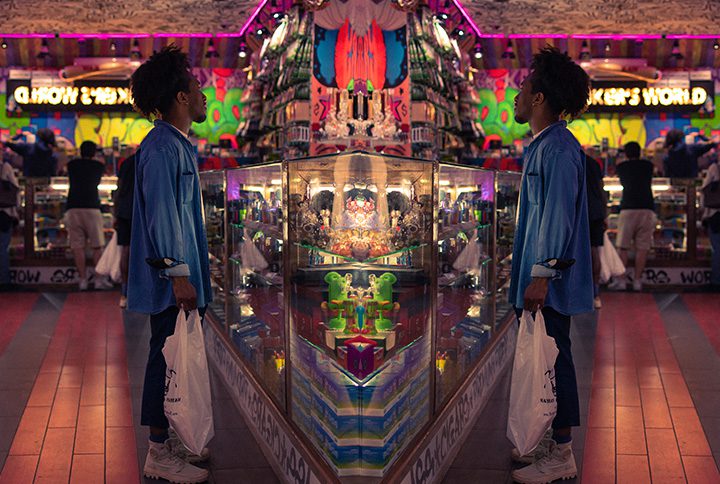
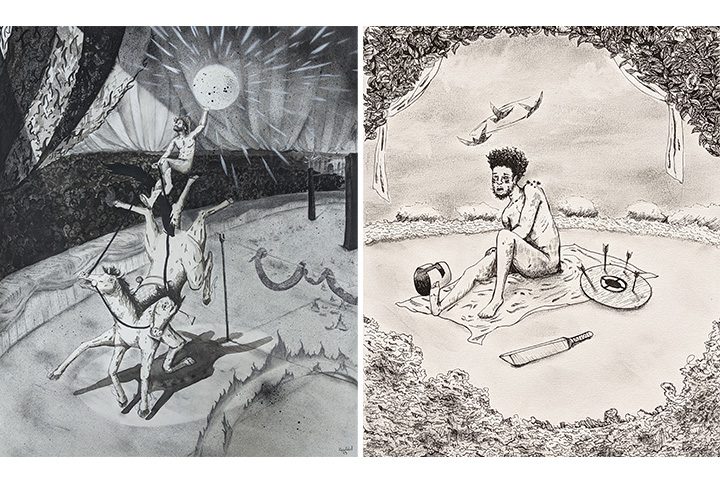
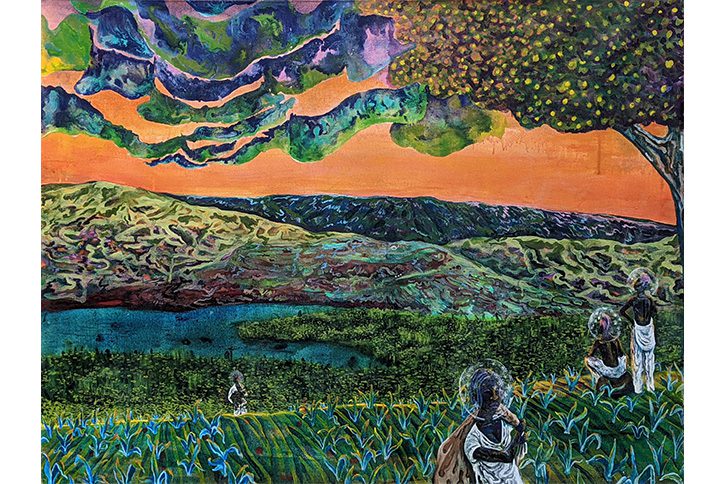
Interviewer: kadeem thomas | Portrait by Photographer: Corri Latapy